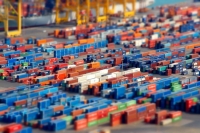Regional Comprehensive Economic Partnership (RCEP) - Can It Be A Game Changer? (Updated version as at 27 August 2021)
- The Regional Comprehensive Economic Partnership (RCEP), is the world’s largest free-trade agreement (FTA) comprising 15 countries: 10 member states of the Association of Southeast Asian Nations (ASEAN) – Brunei, Cambodia, Indonesia, Laos, Malaysia, Myanmar, the Philippines, Singapore, Thailand and Vietnam, and five of their FTA partners (Australia, China, Japan, New Zealand and South Korea).
- The RCEP’s negotiation is an ASEAN driven initiative, which was launched during the 21st ASEAN Summit in Phnom Penh, Cambodia in November 2012. It is the second mega-regional FTA to involve the Asia-Pacific region after the Comprehensive and Progressive Agreement for Trans-Pacific Partnership (CPTPP).
- RCEP was built upon the existing ASEAN+1 FTAs aims to strengthen economic linkages, to enhance trade and investment related activities as well as contribute to minimising development gaps among the parties.
- RCEP negotiations are to achieve a modern, comprehensive, high-quality, and mutually beneficial economic partnership agreement among the ASEAN member states and ASEAN’s FTA partners.
- RCEP will only come into force after 9 signatory countries (a minimum of 6 from ASEAN, 3 from non-ASEAN) have ratified the agreement, which may take more than a year.



.pdf)


